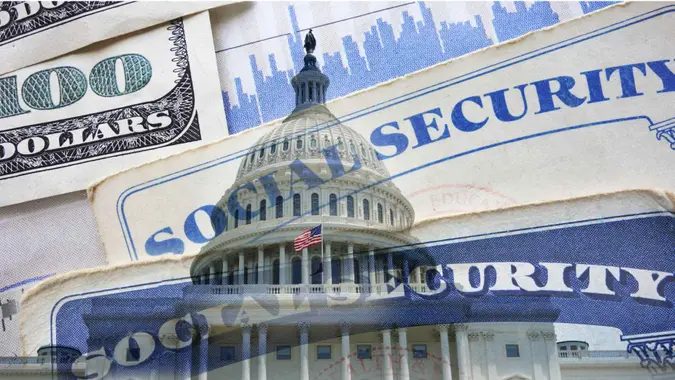6 Big Shakeups to Social Security in 2023

Commitment to Our Readers
GOBankingRates' editorial team is committed to bringing you unbiased reviews and information. We use data-driven methodologies to evaluate financial products and services - our reviews and ratings are not influenced by advertisers. You can read more about our editorial guidelines and our products and services review methodology.

20 Years
Helping You Live Richer

Reviewed
by Experts

Trusted by
Millions of Readers
Social Security will be seeing a lot of changes this year, many of them tied to the biggest cost-of-living adjustment (COLA) in more than 40 years. The new COLA will impact payments to Social Security beneficiaries, but it’s not the only change you will see in 2023.
Following are six changes to the program that are in effect this year, according to a recently published fact sheet from the Social Security Administration.
New COLA Takes Effect
The big news for 2023 is an 8.7% jump in the Social Security COLA, which is the highest since an 11.2% increase in 1981. The COLA’s steep hike this year is due to the soaring inflation rate, which is also the biggest in 41 years.
The average monthly Social Security payment for all retired workers has risen to an estimated $1,827 from $1,681, the SSA said — a gain of $146 a month.
For anyone receiving Social Security benefits, the new payment amount started in January 2023. For those receiving Supplemental Security Income (SSI), the new payment amounts began on Dec. 30, 2022.
One thing to keep in mind: The 2023 COLA of 8.7% won’t apply to all Social Security recipients. Some payment increases will be higher than 8.7% and some will be lower due to a variety of factors, including your primary insurance amount (PIA) and when you sign up for Medicare. The SSA should have mailed COLA notices to beneficiaries providing details on new payment amounts.
Increase in Social Security Disability Thresholds
The SSA pays monthly benefits to people who are unable to work for a year or more because of a disability, and the benefits usually continue until recipients can work again on a regular basis. However, there are also instances when you might have a qualifying disability even if you’re still working, such as if you can’t do work you previously did because of your medical condition. In this case, you are only eligible up to a certain amount of income. When you pass that threshold, you cannot be considered to have a qualifying disability. Following are the threshold changes for 2023, based on average monthly earnings:
| 2022 | 2023 | |
| Non-Blind | $1,350/month | $1,470/month |
| Blind | $2,260/month | $2,460/month |
| Trial Work Period (TWP) | $970/month | $1,050/month |
SSI Federal Payment Standard Rises
Social Security recipients who also qualify for Supplemental Security Income (SSI) benefits have seen an increase in the maximum Federal SSI payment amounts in 2023, based on the 8.7% COLA. For individuals, the standard rose to $914 a month from $841 in 2022. For couples, the payment rose to $1,371 a month in 2023 from $1,261 in 2022.
Rise in Max Benefits for Workers Retiring at Full Retirement Age
Americans who retire at full retirement age — either 66 or 67, depending on when you were born — saw a bump in their maximum benefits this year. The maximum rose to $3,627 a month in 2023 from $3,345 a month in 2022.
Maximum Taxable Earnings Will Increase for Those Still Working
Anyone who has ever received a paycheck knows that part of that check is withheld to pay Social Security taxes. There is a limit on the amount of your annual earnings that can be taxed by Social Security, called the maximum taxable earnings. That limit rose to $160,200 in 2023 from $147,000 in 2022.
Change to Earnings Test Exempt Amounts
Social Security withholds benefits if your earnings exceed a certain level and if you are under the full retirement age (FRA). This is called the retirement earnings test exempt amount. According to the SSA, one of two different exempt amounts apply — a lower amount in years before the year you reach FRA and a higher amount in the year you reach FRA.
If you are under full retirement age, the earnings test exempt amount rose to $1,770 a month in 2023 from $1,630 a month in 2022. If you have reached FRA, the amount rose to $4,710 a month in 2023 from $4,330 in 2022.
More From GOBankingRates
 Written by
Written by  Edited by
Edited by 






















